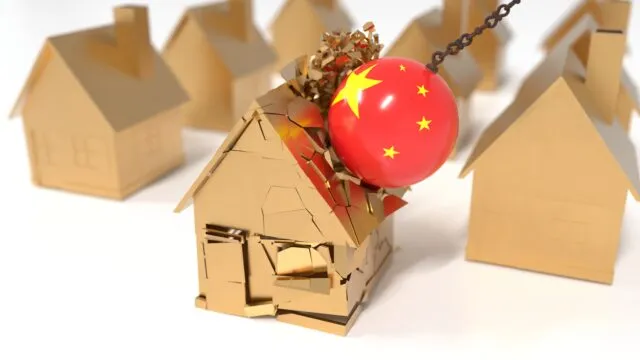The dramatic and swift decline of Chinese property over the past 12 months has shaken confidence in a sector that has been one of the three key pillars supporting the country’s economic miracle over the past two decades. Representing the market’s worst-ever correction, data from Bloomberg showed property sales plummeting 28% year-on-year in 2022. Yet this U-turn might turn out to be what the market needs.
Jenny Zeng, chief investment officer for Asian fixed income at Allianz Global Investors, discusses the lessons learned from last year’s events, the structural changes on the supply and demand side of China’s property market and what’s next for China property.
What can we learn from the significant change in fortune for Chinese property?
First, the shake-up in Chinese property should remind investors of the importance of applying a well-thought out and fundamental research framework to China, rather than expecting policy to come to the rescue. There’s a limit even in China to how policy can impact the basic ‘physics’ of credits – defaults are due to happen on corporates with prolonged negative cash flows, unsustainable capital structures and poor liquidity management.
Secondly, policy in China can significantly widen the range of outcomes or prolong irrationality. For example, Chinese property bonds delivered double-digit annualised returns with minimal default rates from 2009 to 2020 – a situation that should be considered an anomaly.
Thirdly, it is critical for investors to understand the structural logic behind policies, to avoid being confused by short-term tactical tweaks.
Based on these lessons, and combined with the likely changes to how different market participants will now approach the sector, we believe that the property bust – albeit being painful and ruthless – deflates the bubble and positions Chinese property for a healthier and more stable future.
Rampant speculation in recent years has inflated demand for housing. Is there now too much, or not enough?
Many have argued for years that rampant speculation activity in the real estate sector in China has inflated overall housing demand and it has left China with too much housing that it will be impossible to dispose of without a severe and destabilising drop in prices.
In reality, widespread property speculation in China has actually led to shortages in many areas, as investment and real demand for housing contended for a limited supply of properties. Many of these investment properties were kept empty rather than being rented out based on the expectation of increasing property value; the result was that living standards were artificially depressed, particularly in big cities.
However, as China’s urbanisation rate moderates and demographic trends adjust, we expect to see a structural change in the drivers of demand for residential property, from first-home buyer dominant to upgrade buyer dominant. Moreover, artificially depressed living standards particularly in big cities will also create upgrade demand, with the residential housing sector to shift from serving Chinese households’ dream of ‘owning a home’ to ‘owning a quality home’.
On the supply side, we foresee increasing home supply from the secondary market. With the illusion of ever-increasing property prices now shattered, investment properties previously kept vacant will now become available.
More specifically, we forecast primary and secondary supply ratios to further fall on a national aggregate level – from the current 80/20 level to 70/30 over the next five years, and then to 50/50 after 2028.
In response, construction activities will need to be scaled back as they adjust to meet the long-term structural changes. Developers will therefore need to sustain much longer working capital cycles, requiring them to find lower costs of funding.
How can China manage the transitions in demand and supply?
In the long run, with speculators no longer willing to buy properties and keep them empty, vacant properties circulated in the market and utilised, combined with a shrinking population, we believe China will see significantly lower demand for new builds. In turn, the property industry will reduce in size.
This outlook is at odds with China’s policy priority of stable home prices, reduced property speculation and strong real estate construction. As a result, we believe that if policymakers want to reduce speculation without generating a collapse in prices that will destabilise the financial sector and undermine household wealth, then they need to radically scale back new construction. In short, the fall in future demand for housing must be balanced with a lower volume of new supply.
This goal is, in fact, commensurate with the overarching objective to transition from a construction-driven economy to one fueled more by consumption. The challenge, as always, is how to achieve this without triggering systemic risk.
Amid all the changes it faces, what’s next for the Chinese property market?
As stability slowly returns in the near term, we believe China’s property policy will continue to focus on diversifying the economy and reducing the overdependence of the banking system on the property sector.
Coupled with this will be a focus on reducing the supply of new property, including a gradual move away from the presale exit model, as well as a desire to structurally increase the holding costs (via property tax) for owners of multiple properties, with a view to utilising existing stock.
We also expect authorities to facilitate the development of a rental market by standardising industry practices and improving transparency to safeguard market order.
With these structural changes in mind, private and state-owned developers alike need to reinvent themselves to find their respective places in the following three areas:
- Managing ‘stock’: as incremental sales moderate, developers must find ways to compete in the areas of existing properties, such as through property management, rentals or redevelopments;
- Building high-quality properties: instead of churning out lower-quality, cheap blocks, both residential and commercial developers with superior product design, development capabilities and brand names – as well as competitive funding costs – will likely emerge as the longer-term winners; and
- Developing new business models: opportunities such as REITs (real estate investment trusts), property private equity funds and construction have their own characteristics and require different amounts of know-how.
Who will emerge as the winners in the new era of Chinese property?
The evolving property landscape in China requires a new set of competitive advantages, although one common factor remains critical for future success: the ability to obtain low-cost and long-dated funding.
As a result, developers need to be either state-owned or rated as investment grade, or need to be associated with or majority owned by firms that can enable them to access long-term, cheap sources of funding. Essentially, there will be more state involvement in the sector going forward, which shouldn’t come as a surprise to investors.
Meanwhile, those private developers that survive the market reset should emerge with a better credit profile than ever before, as sales stabilise while capex remains in check.
That said, looking beyond the immediate repairment stage, most private developers need to ensure their businesses are viable by finding ways to extend their funding tenor and lower their overall funding cost. This will most likely require the help of the state initially, but then involve a fundamental re-rating.
It’s a different story for stressed and defaulted developers. Some of them may not re-emerge at all. Yet those firms with a competitive edge of some sort, whether in terms of geographic positioning, brand name or product, will have a higher chance of successfully rebuilding a viable business model in the post-restructuring period.
The ability to achieve this will be the ultimate and fundamental driver for medium- to long-term credit repricing.
Jenny Zeng, chief investment officer for Asian fixed income at Allianz Global Investors.

















